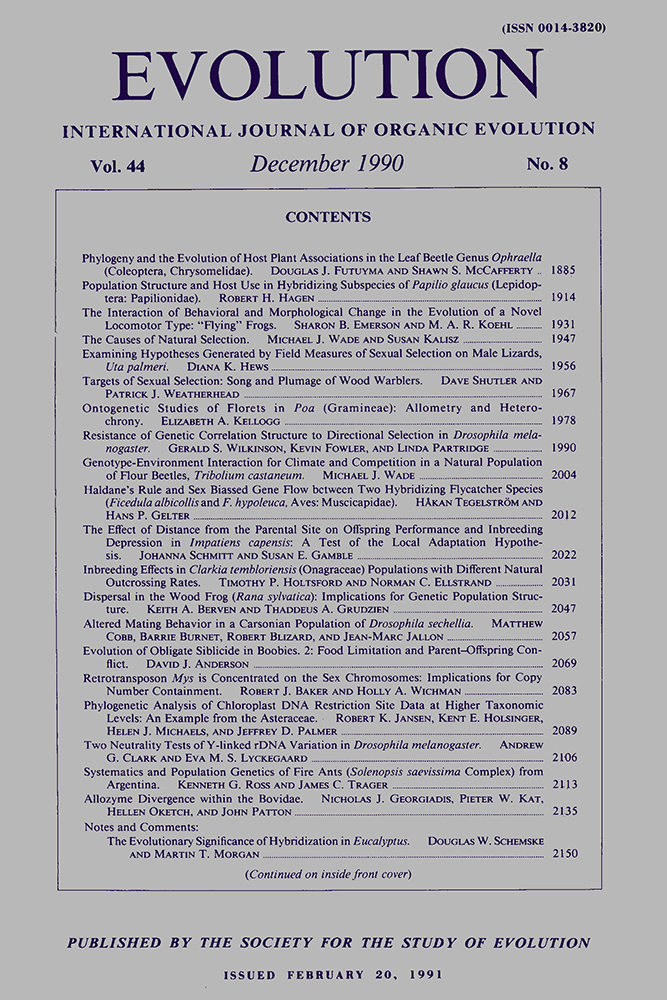ALTERED MATING BEHAVIOR IN A CARSONIAN POPULATION OF DROSOPHILA SECHELLIA
Abstract
Mating behavior was studied in two laboratory populations of Drosophila sechellia and their reciprocal hybrids. The ancestral population was reared on a special medium, optimal for this species, while the derived population was reared on a standard Drosophila food, and underwent a bottleneck while adapting to this new medium, in a manner similar to the “founder-flush” process of Carson (1971). A significant tendency towards mating asymmetry was found, with ancestral females mating significantly less frequently with derived males than derived females with ancestral males. Analysis of hybrids suggested an important role for the male's X chromosome or for a maternal effect. No significant differences were found among parental types for their main female cuticular hydrocarbons, the proportion of courtship spent in various behavioral elements, body weight, or wing length. Significant differences were found in the structure of courtship, male locomotor activity, male cuticular hydrocarbon levels, and male courtship song inter-pulse interval (i.p.i.). None of these differences showed an X-linked effect in the reciprocal hybrids. Hypotheses put forward to explain interspecific mating asymmetries are discussed in the light of these results.




